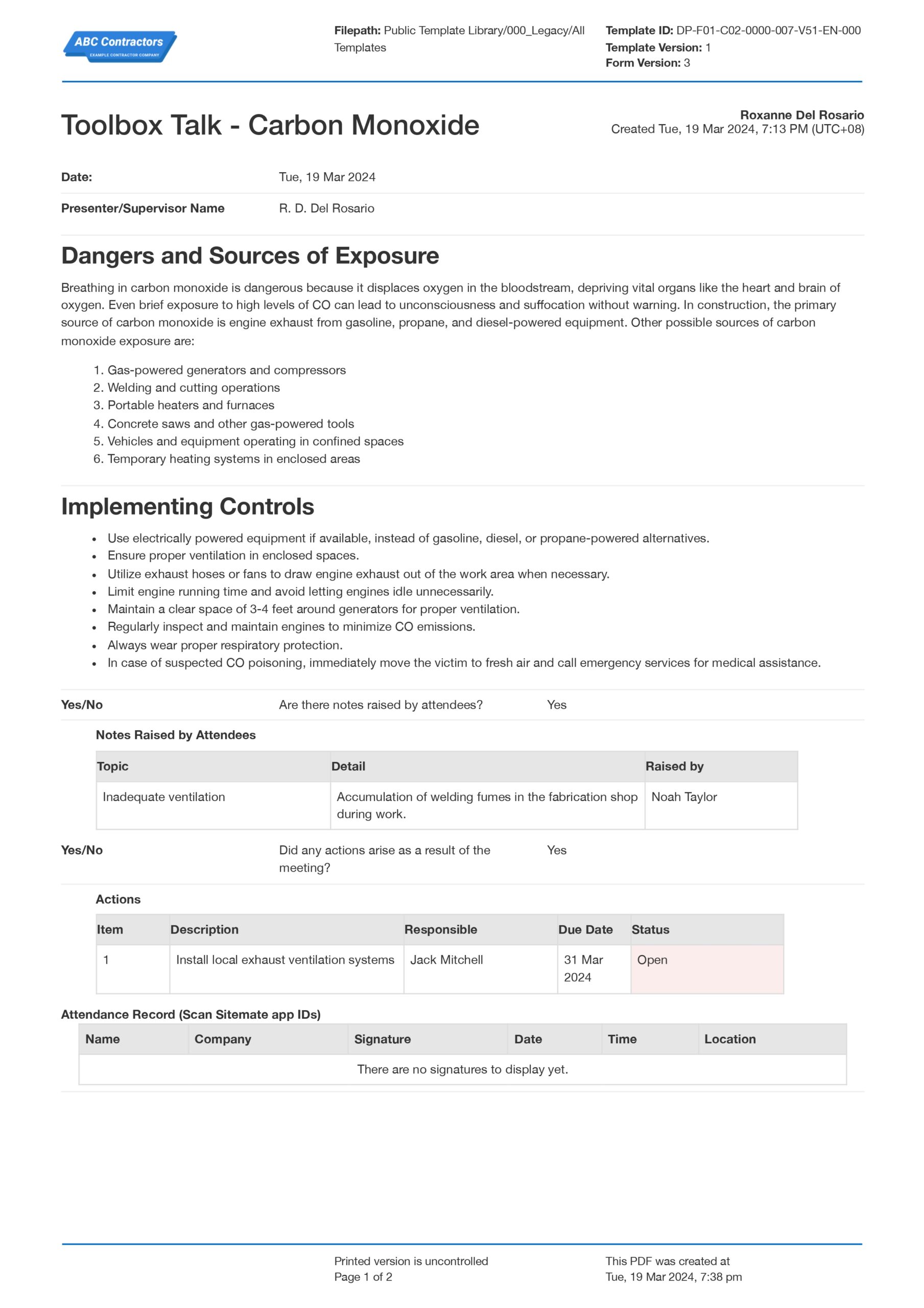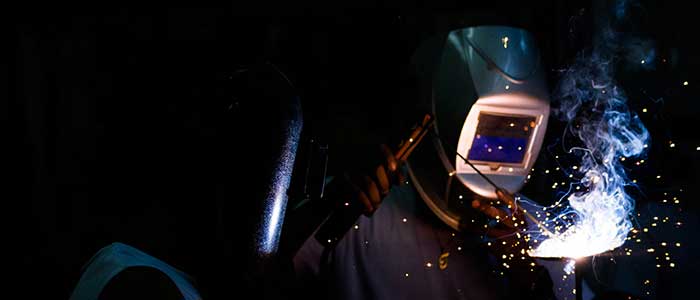Dashpivot Article – What are the Hazards of Carbon Monoxide?

What are the Hazards of Carbon Monoxide?
What is Carbon Monoxide?
Carbon monoxide, chemically known as CO, is an odourless, colourless, and tasteless gas or liquid. It usually comes from incomplete combustion due to a lack of oxidation of carbon. High quantities of carbon monoxide are very dangerous to any breathing organism, which is why we need to answer the question of what are the hazards of carbon monoxide. This compound attaches to the haemoglobin in the blood, which reduces the capacity of a blood cell to carry oxygen in our body. Carbon monoxide also has dire effects on our environment.
When carbon monoxide is emitted to the atmosphere, its effects are like those of greenhouse gases. This compound is greatly contributing to the already existing world crisis, which is climate change and global warming, where adverse weather conditions occur and rising sea levels due to the accelerated melting of ice on the North Pole (the Arctic).
Having knowledge of the hazards that carbon monoxide brings gives us the chance to recognise and mitigate the exposure to this compound. With knowledge comes wisdom on how to provide effective solutions in the field and implement required measures such as detection systems, proper ventilation, and health monitoring.
Not only that, organisations can also provide proper measures to help save our environment and control its emissions. Having these measures well-made places an organisation’s reputation on a gold pedestal for keeping employees safe and actively helping the environment.
What Are the Sources of Carbon Monoxide Hazards?
Now that the question of what are carbon monoxide hazards has been answered, it is also important to understand where these hazards commonly arise from in the workplace:
Hazards of Carbon Monoxide in Relation to Combustion Engines
Industries that use combustion engines are the most common source of carbon dioxide. Vehicle engines, generators, and engine-operated machinery are running in close or half-closed spaces, and where adequate ventilation is not provided, carbon monoxide will be sure to accumulate. Underground mines and indoor workspaces where engine-operated forklifts and portable generators are around would also be a common occurrence of carbon monoxide buildup.
Heating Systems
Heating systems are commonly found in homes where winters are a season, industrial plants, and power plants. These systems usually produce small amounts of carbon monoxide, but when they are poorly maintained, the burning process becomes dirty and inefficient, which results in producing a lot of carbon monoxide. Good practice in the maintenance of these systems is the sole solution to keeping carbon monoxide emissions to a safe volume.
Welding and Cutting
Fabrication shops and metal processing shops usually use welding and cutting procedures in their daily activities. During the welding and cutting activities, the burning of gas for welding, especially in processes that require acetylene, propane, and other flammables, generates carbon monoxide as a byproduct. This has the potential to generate heaps of volume of carbon monoxide, which can be dangerous to the workers.
What are the Hazards of Carbon Monoxide Around Chemical Production and Processing?
Other chemical reactions apart from combustion generate carbon monoxide. There are some particular instances of such chemical reactions. One is related to cement making. A side effect of heating calcium carbonate generates carbon monoxide. Another ideal example would be the synthesis of formaldehyde. One byproduct of methanol-catalysing oxidation is carbon monoxide. Chemical companies and other businesses using these chemical processes should offer vital steps to reduce exposure as carbon monoxide is a consequence of their operation.
Fire and Combustion Processes
It is established that once we burn materials, carbon monoxide is inevitably a byproduct. Having said this, it is a fact that smelting and metalworking facilities can produce carbon monoxide.
Proper airflow and emission control systems should be integrated into smelting and foundry shops where metalworking is a great part of their production.
Without these systems, carbon monoxide could volume up and accumulate to dangerous levels
What Are the Hazards of Carbon Monoxide?
It is essential to comprehend the dangers of carbon monoxide in environments where using fossil fuels is a regular part of professional activities. The particular dangers of carbon monoxide exposure are described in this section.
Hazard of Carbon Monoxide #1 - Hypoxic Injury
Hypoxia is a medical condition where carbon monoxide interferes with the blood cell's ability to carry oxygen. Accumulation of carbon monoxide puts workers at risk when the area they are in is not properly ventilated.
Industries where heavy combustion is involved, like manufacturing facilities and construction sites, should provide adequate measures to prevent injuries and illnesses that come from the hazards of carbon monoxide accumulating.
Explosion due to CO
Excessive carbon monoxide volumes have the potential to explode.
If the spaces where motors and generators are installed are not adequately provided with air, carbon monoxide levels can quickly grow in the enterprise where these machines operate continuously. These explosions have the potential to endanger lives, destroy property, interrupt business operations, and result in financial loss.
Cognitive Function may be Impaired
Even at very low levels, the presence of carbon monoxide can cause harm to your cognitive functions and reaction times.
Our cognitive functions and reaction time are critical in work settings that depend on precision and quick responsiveness.
This impairment puts everyone nearby at risk and may result in unintended accidents and injury.
Existing Health Problems Gets Worse
People who already suffer from diseases in the heart or lungs are particularly more in danger with the effects of strong exposure to carbon monoxide.
These people are more likely to experience episodes of their health problems in industrial settings, where they may be exposed to fluctuating CO levels. This could result in serious health crises.
One of the Subtle Hazards of Carbon Monoxide is Chronic Health Issues
Being exposed to low-level carbon monoxide can bring about serious long-term health issues like irreversible brain damage. Long-term health problems that may not be clearly linked to carbon monoxide might complicate diagnosis and treatment for employees working in places like tunnels and subterranean construction sites, where carbon monoxide may unintentionally build up.
Education on Carbon Monoxide Hazards
Keeping a safe workplace requires educating employees on the dangers of carbon monoxide. This section describes doable tactics that can be used to successfully increase awareness and improve safety procedures related to workplace carbon monoxide exposure.
What are the Hazards of Carbon Monoxide Specific Training
Trainings are the best way to educate workers about hazards in the workplace. That is why organisations should provide comprehensive training programmes that incorporate theoretical learning and interactive activities that would be vital for helping workers have retention about the hazards of carbon monoxide. The training should cover in detail the sources where carbon monoxide could come from, the adverse effects on human health, and the correct solutions and parameters workers must do to mitigate exposure.
These trainings should conduct a carbon monoxide leak drill to give workers on the field experience in using detection equipment and performing the correct emergency responses. Using this approach would have workers understand deeply the theories and improve their practical skills. This will be essential for retaining important safety information, and safety in the workplace would effectively be managed.
Shift Meetings
Including carbon monoxide safety into daily meetings is good practice in organisations. This will help enforce awareness of the dangers of carbon monoxide hazards continuously. Having these brief meetings at the start of every shift can be a platform to discuss recent incidents that include carbon monoxide. This will also alleviate the present measures that are always in place and are always provided to help control and eliminate carbon dioxide incidents. Always repeating this in meetings helps workers have retention of the proper procedures, thus the safety culture grows and regulations are always complied.
Displaying Visual Aids
To help supplement the safety culture in the workplace, placing visual reminders would be a great fit. These posters can contain information like a symptoms chart to help workers be aware that they are already exposed to high levels of carbon monoxide. Visual aids are only effective if they are placed in appropriate places. They should be clear and concise so that they will be easy to understand and read. To make it more exclusive, it would be better to have posters that contain multiple languages
Holding a Toolbox Talk on Carbon Monoxide
A toolbox talk is a brief, informal meeting focusing on specific safety issues. There are hundreds of great toolbox talks ideas, with the hazards of carbon monoxide being a good one.
To effectively hold a toolbox talk on carbon monoxide, start by gathering all workers at a time when interruptions are unlikely. Begin with a clear explanation of what carbon monoxide is and the common sources of CO in the workplace. Discuss the health risks associated with CO exposure and the personal and area monitoring systems in place.
Use actual incidents as examples to underline the potential hazards and the correct emergency response actions, such as evacuating the area and using supplemental oxygen. Encourage questions to ensure workers understand their risks and responsibilities. Conclude by reviewing key points and distributing written materials that workers can refer to later, ensuring the information is accessible and also well understood.
Ensure that you document any strategies that you implement. The potential for CO exposure will change based on current work activities and changes in the work environment. You will need to have a reference to review your strategies in the future.
Below is an example of a toolbox talk on carbon monoxide hazards that has been documented with a toolbox talk form template:

Use and customise free toolbox talk forms about carbon monoxide hazards
Hold better toolbox talks on carbon monoxide hazards with free and customisable forms
Toolbox talks are a quick and effective method for keeping your team aware of carbon monoxide hazards. For your next toolbox talk on carbon monoxide, consider using this toolbox talk carbon monoxide template.
The form is pre-built with everything you need to hold an effective meeting. You can detail all your discussion points on carbon monoxide hazards and controls, record any safety issues raised by team members, assign action items for follow-up, and take meeting attendance. You can also add photos and attachments and customise it to suit any further requirements.
Keeping a safe workplace requires educating employees on the dangers of carbon monoxide. This section describes doable tactics that can be used to successfully increase awareness and improve safety procedures related to workplace carbon monoxide exposure.

Job Hazard Analysis Confined Space template
Make sure your work in confined spaces is safe and compliant with the Confined Space Job Hazard Analysis template.

Safe Work Method Statement for Hot Works template
Improve how hot works are conducted and managed across your workforce and sites by keeping a standardised and trusted SWMS.

Safe Work Method Statement for Concrete Cutting template
Concrete cutting (and other cutting) is some of the most dangerous work on any project or site. Improve cutting safety using this cutting SWMS.

